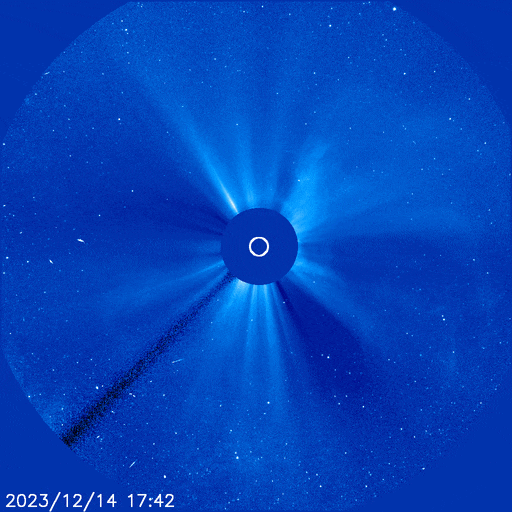In response to an incoming solar wind stream with a stealthy CME embedded in it. Storm levels could escalate to category G2 (Moderate) or G3 (Strong) on Dec. 17th when the CME from yesterday’s X2.8-class flare arrives. Subscribers to our Space Weather Alert Service will receive an instant text message when the CME strikes. CME alerts: SMS Text
(UPDATED) STRONGEST FLARE OF THE CURRENT SOLAR CYCLE: Sunspot 3514 erupted on Dec. 14th (1702 UT), producing a strong X2.8-classsolar flare. This is the strongest flare of Solar Cycle 25 (so far) and the most powerful eruption the sun has produced since the great storms of Sept. 2017. NASA’s Solar Dynamics Observatory recorded the extreme ultraviolet flash:

Although this CME is not squarely aimed at Earth, it does appear to have an Earth-directed component. A glancing blow is likely on Dec. 17th. Solar flare alerts: SMS Text
